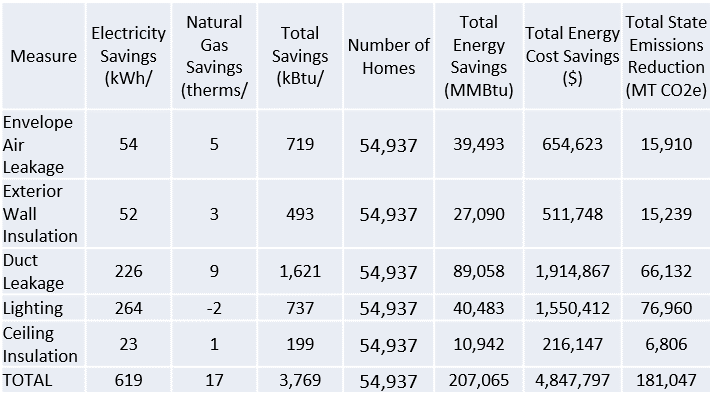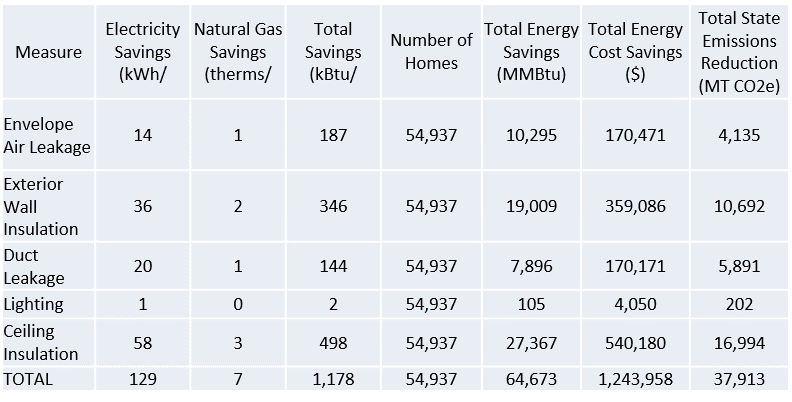The Phase 1 data analysis established baselines for energy related measures (products, materials and systems) used in new construction and for energy use. It also identified the measures with the highest energy savings potential and quantified those potential savings in terms of energy, cost and CO2 emissions.
Education and Outreach
 The High Potential Savings Measures identified in the analysis were a primary focus of our Phase 2, Education and Outreach effort. Working with Hahn Public Communications, SPEER developed outreach materials including handouts, social media messaging and factsheets for each measure to drive target audiences to our trainings and webinars. We held 70 Field Study trainings and webinars with over 1850 attendees. International Code Council CEU were made available for each training or webinar.
The High Potential Savings Measures identified in the analysis were a primary focus of our Phase 2, Education and Outreach effort. Working with Hahn Public Communications, SPEER developed outreach materials including handouts, social media messaging and factsheets for each measure to drive target audiences to our trainings and webinars. We held 70 Field Study trainings and webinars with over 1850 attendees. International Code Council CEU were made available for each training or webinar.
Data Analysis
Phase 3 data collection was completed in 2018 and the data was analyzed by Pacific Northwest National Laboratory and compared with the Phase 1 analysis results. Both sets of results were then compared to prototypical models based on the IECC.
An Energy Use Intensity (EUI) analysis comparing prototype models of the Phase 1 and Phase 3 data with an IECC code compliant model show that an IECC compliant model has an EUI of 22.15 kBtu/sqft. The Phase 1 models show a mean EUI of 22.57, or slightly more energy use than a code home, and the 2018 data result in a mean EUI of 20.74, significantly more efficient than the 2015 IECC. This translates to an eight percent improvement in the overall energy efficiency of the homes over the three-year period between phases 1 and 3. 
High Potential Savings Measures Results
The Phase 1 data analysis identified five measures where at least fifteen percent of the observations found the measure to be below code levels. Those measures were; Envelope Air Leakage, Exterior Wall Insulation Installation, Duct Leakage, High Efficacy Lighting and Ceiling Insulation Installation. Pacific Northwest National Lab analyzed the potential savings for each of these measures and they became the focus of our Phase 2 Outreach and Education program. See the Phase 1 and Phase 3 savings analyses below.
Phase 1, High Potential Savings Analysis

Phase 3, High Potential Savings Measure Analysis
